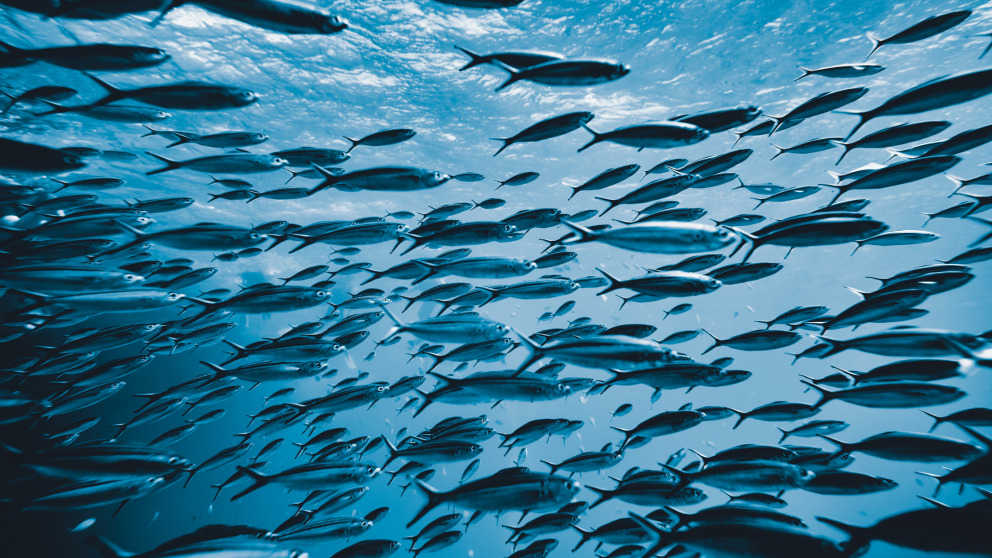Headline:
New Report Identifies Trade-offs and Synergies between United Nations’ Sustainable Development Goals

Interactions between the United Nations’ 17 Sustainable Development Goals can deliver synergistic effects and result in conflicts. An international report, prepared with input from researchers at the Institute for Advanced Sustainability Studies (IASS) in Potsdam and the “Future Ocean” Cluster Of Excellence in Kiel, offers a detailed analysis of four Sustainable Development Goals and their interactions with other goals in the 2030 Agenda. Within the 2030 Agenda, the world’s oceans, coasts, and marine resources have a cross-cutting role with links to all major fields of development, underscoring both their vital importance for future sustainable development as well as the indivisible and integrated nature of this ambitious new agenda for global development.
Efforts to achieve the UN Sustainable Development Goals (SDGs) can be bolstered by prioritising investments and policies that strengthen positive relationships across the goals, argues a new report titled “A Guide to SDG Interactions: from Science to Implementation”, which was published recently by the International Council for Science (ICSU). Ocean governance researchers Stefanie Schmidt, Yvonne Waweru, Carole Durussel, and Sebastian Unger from the IASS cooperated with Barbara Neumann and Martin Visbeck from the “Future Ocean” Cluster of Excellence at the University of Kiel to write the report’s chapter on the Sustainable Development Goal for the Oceans (SDG 14), which addresses the sustainable management of the world’s oceans, coasts, and marine resources.
Clear recommendations for decision-makers
This comprehensive report treads new ground in its attempt to quantify the synergies and conflicts between the 17 Sustainable Development Goals and provides a detailed analysis around four goals: food security and sustainable agriculture (SDG 2), health and well-being (SDG 3), access to affordable energy (SDG 7) and marine conservation (SDG 14). An international team of 22 researchers applied a seven-point scale, ranging from +3 for highly synergistic effects to -3 for goals and targets that conflict with each other at a fundamental level. The analysis is intended to help decision-makers to develop coherent strategies for achieving the goals.
“The report shows very clearly that our most pressing sustainability challenges – including marine conservation – can only be resolved in conjunction with other issues, such as climate change, food security, and sustainable consumption,” said Sebastian Unger, Head of Ocean Governance at the IASS. According to the analysis, most of the sustainable development goals are synergistic – but not equally so. The adoption of sustainable consumption and production practices on land (SDG 12), for example, would have a strong positive effect on efforts to reduce marine pollution, an important target for SDG 14. Other aspects of marine conservation, including transformations within tourism, fisheries, and coastal agriculture could create new employment opportunities and reduce poverty (SDG 1).
Oceans are crucial for the success of the Agenda for Sustainable Development
“The role of the oceans in the implementation of the 2030 Agenda extends far beyond SDG 14 and its specific targets. It is important to understand where measures impact positively on both the ocean and other goals across the Agenda for Sustainable Development as these insights could ease its implementation,” said Martin Visbeck, the spokesperson of the “Future Ocean” Cluster of Excellence in Kiel and an oceanographer at the GEOMAR Helmholtz Centre for Ocean Research Kiel.
However the report also identifies potential conflicts, or trade-offs. For instance, greater regulation of fisheries to protect marine flora and fauna (SDG 14) could limit access to food resources (SDG 2). “Policymaking must reflect the integrated and indivisible nature of the 2030 Agenda and its targets if the oceans, seas, and marine resources are to deliver on their potential as cornerstones for sustainable development,” emphasises lead author Stefanie Schmidt. Drawing on a selection of case studies, the chapter on SDG 14 provides a detailed overview of the interactions between the development goals and shows how these complex and systemic interlinkages can be analysed for the purpose of developing appropriate policies and approaches to implementation. “Our analyses show that cross-ministerial policy development strategies are vital if the designated goals are to be achieved by 2030 and genuinely sustainable development pathways are to be adopted. Stand-alone solutions will always tend to have a negative effect on the broader process,” says Barbara Neumann.
The report was launched by the ICSU at the “Multi-stakeholder Forum on Science, Technology and Innovation for the Sustainable Development Goals” (STI Forum) at the United Nations in New York on 16 May and will be presented in cooperation with the IASS and the “Future Ocean” Cluster of Excellence at a side event at the UN Conference to Support the Implementation of Sustainable Development Goal 14, taking place this June in New York.
